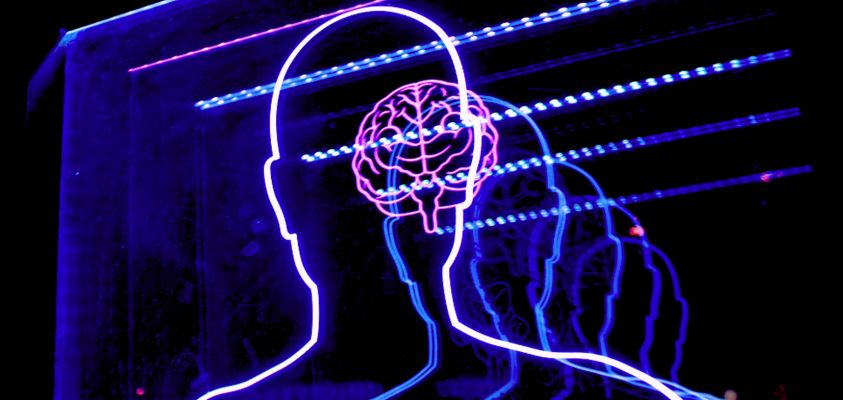Brain-Machine Interfaces Are Rich In Potential And Hype
R&D is accelerating in the vital field of brain-machine interfaces (BMI). Elon Musk recently disclosed in a Clubhouse interview that at Neuralink, his BMI venture, a monkey is playing video games via neural implants. He also made some signature provocative projections like his ultimate goal of connecting brains with a powerful AI. “The future of the world will be controlled by the combined will of the people of the earth.” He said, “That might be the most important thing that a device like this achieves.”
Putting the hype aside, BMI research has profound potential for positive impact. Musk’s investment and evangelization are drawing serious resources to explore the human brain’s uncharted workings and connections.

Why Brain-Machine Interfaces Are Vitally Important
Noted neurosurgeon and author, Dr. Henry Marsh, said in a 2019 interview, “Everything we are thinking and doing is generated by the activity in our brain, but we really don’t know how.” Brain-machine interfaces sense and stimulate tiny electric impulses in a working brain. In the case of the game-playing monkey, Neuralink’s team robotically inserted hundreds of interface filaments into the animal’s cerebral cortex.
The knowledge and techniques discovered in BMI research could alleviate significant human hardship. Precisely reading and sending signals in the brain might help researchers find solutions for multiple disorders, from paralyzed limbs to psychological distress. The need is enormous: more than a billion people live with disabilities.
This Marketing Will Attract Positive Results
Musk’s promotional prowess brings attention to a richly deserving field. What’s going to get more press: “We’re testing a new brain-computer interface,” or “We will be able to save our mind’s state, like a video game. We’ll be able to decide if we want to be downloaded into people or into robots.”
While most engineering researchers will talk about measuring communication between neurons, Musk expounds on our minds communicating with a conscious AI. “On a species level, it’s important to figure out how we coexist with advanced AI, achieving some AI symbiosis.”
Such quoteables motivate money, talent, and ideas.
Ever More BMI Projects
The BMI field is not new; now activity is surging. In his famous 1945 Atlantic article, “As We May Think,” Vannevar Bush envisioned directly connecting our minds to vast data archives. And for at least a decade engineers have used brain waves to control popular games like World of Warcraft.
As I wrote last September, the Neuralink team is doing exquisite hardware and AI software engineering. It’s a beautiful example of technology convergence. The plummeting cost and increasing capabilities of computing horsepower, specialized materials, and software algorithms are creating a wave of innovative solutions.
BrainGate, like Neuralink, uses a high-density implanted sensor array implanted in the brain to exchange signals with neurons. With BrainGate’s system, persons with tetraplegia can feed themselves, walk, and use the internet by controlling robotic arms and computer mice with their minds.
Last Summer, Paradromics debuted a 30,000-sensor implanted array capturing signals from a sheep’s brain. That’s an order of magnitude more connections than in Neuralink’s device. Paradromics has won significant funding to refine their probe array and software.
Cornell’s BrainNet has connected three gamers’ brains in a mini social network. Together they can play a computer game using only their thoughts.
Nissan has demonstrated using a driver’s brain waves to control a car. (The technology is cool, but distracted driving is highly dangerous so I’m puzzled by Nissan’s design.)

Iota Biosciences spun out of U.C. Berkeley in 2017. Their nanobots, called “neural dust,” now connect to nerves and, eventually, neurons. The minute machines wirelessly send and receive impulses from inside the body. Japan’s Astellas Pharma, Inc., bought Iota for $127.5 million in October 2020 and announced a commitment to invest another $125 million in expanding the company over the next five years.
More BMI Discoveries Mean Fewer Limitations
Musk is a bellwether for technology futures. He pushes seemingly nutty ideas then gets things done. What his companies do often meet big needs and dreams. Whether it was online payments, electric cars, solar power, or commercial space flight, Musk correctly timed the required technologies’ cost and capability. Neuralink’s BMI is the latest in that line of audacious ventures.
Deeply understanding the human brain, connecting with it, and measuring its workings in detail offers a tremendous opportunity to ease human suffering. One of my great hopes is to see the prevention or total remediation of disorders like dyslexia and autism by learning their root-causes.
Brain-machine interfaces may never allow us to talk in our heads with a global AI conscience. But I’m confident that they will, in time, allow the lame to walk, the blind to see, the deaf to hear, and the mute to speak.
Cover Photo by Bret Kavanaugh on Unsplash




